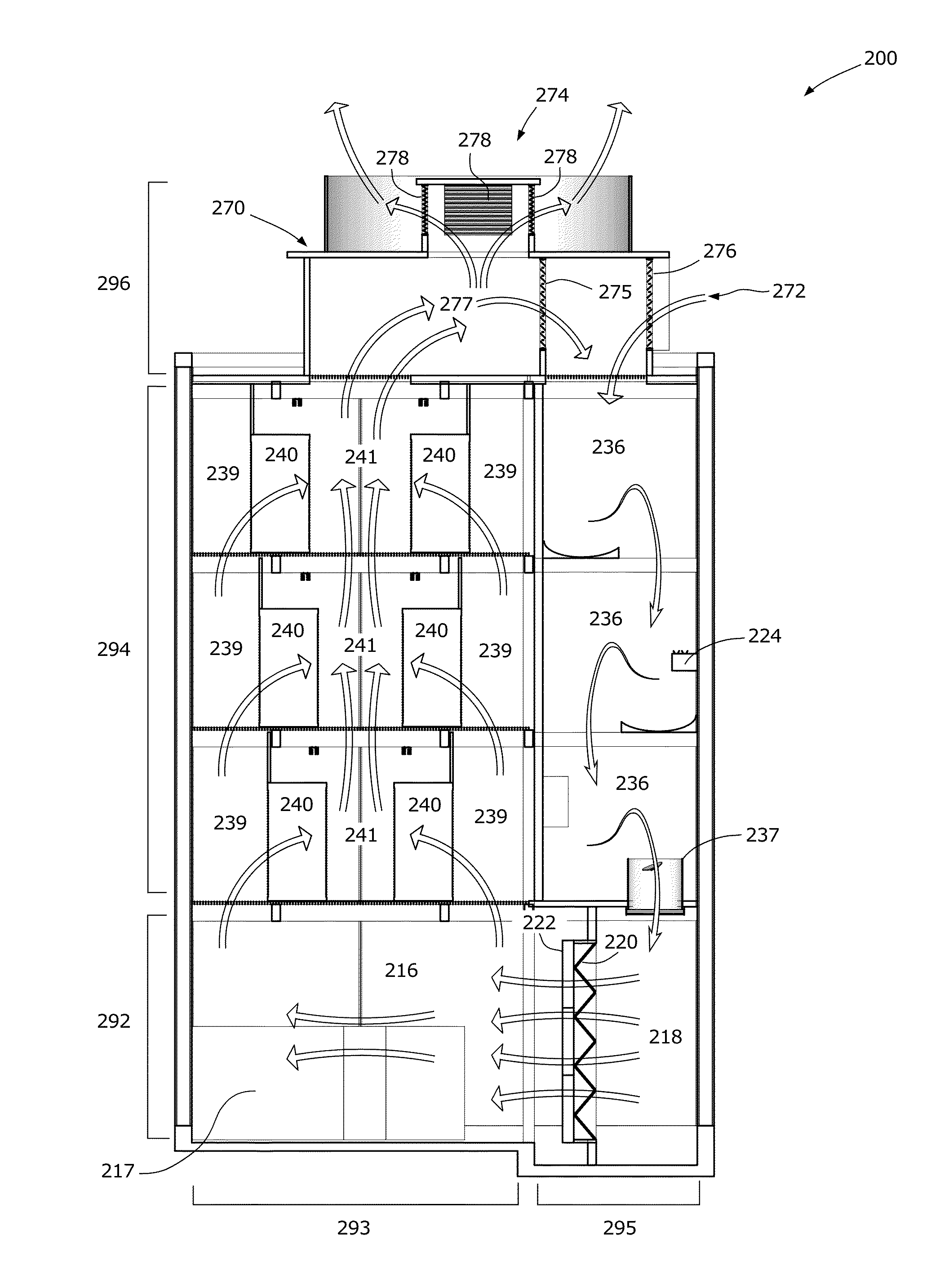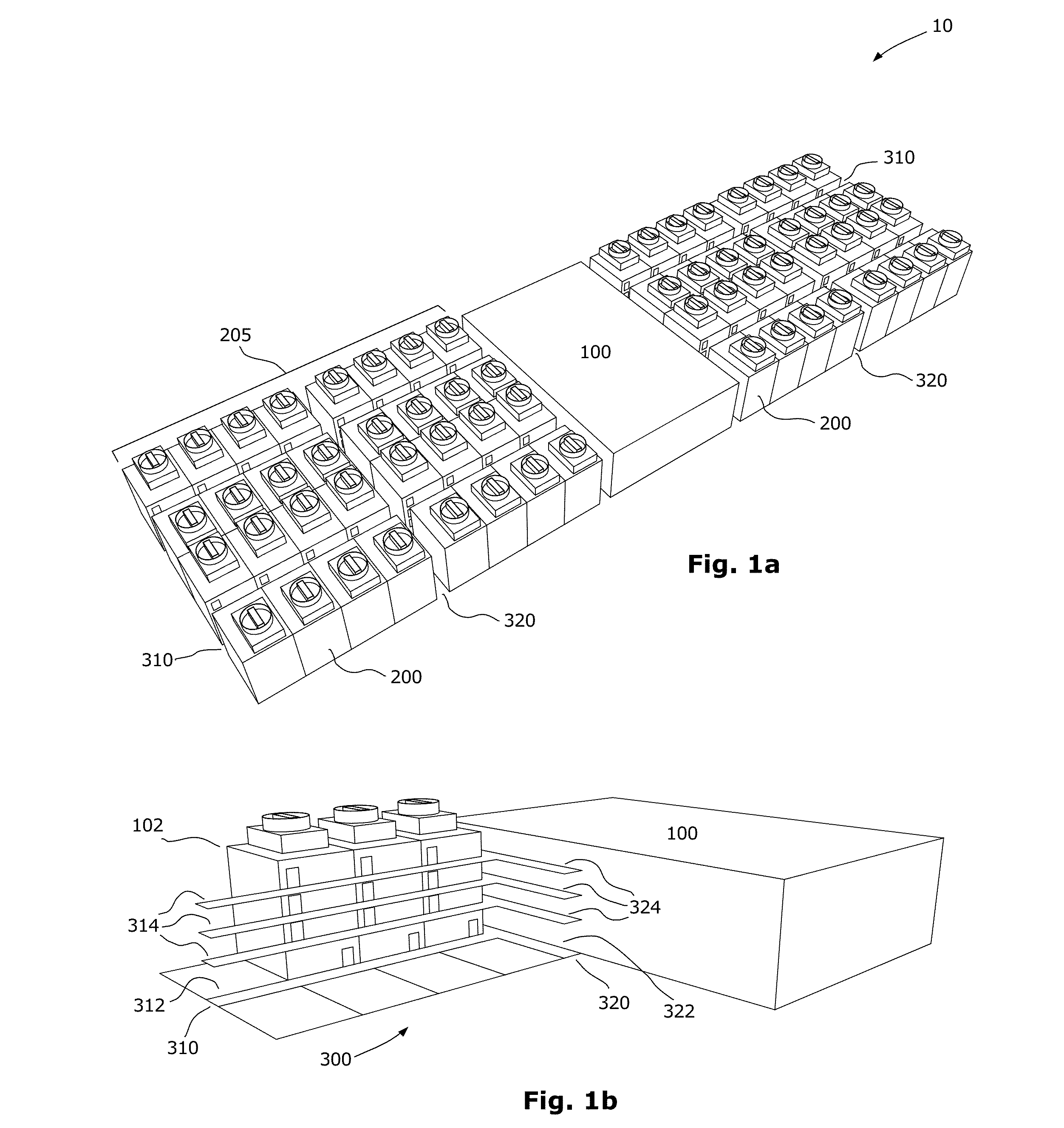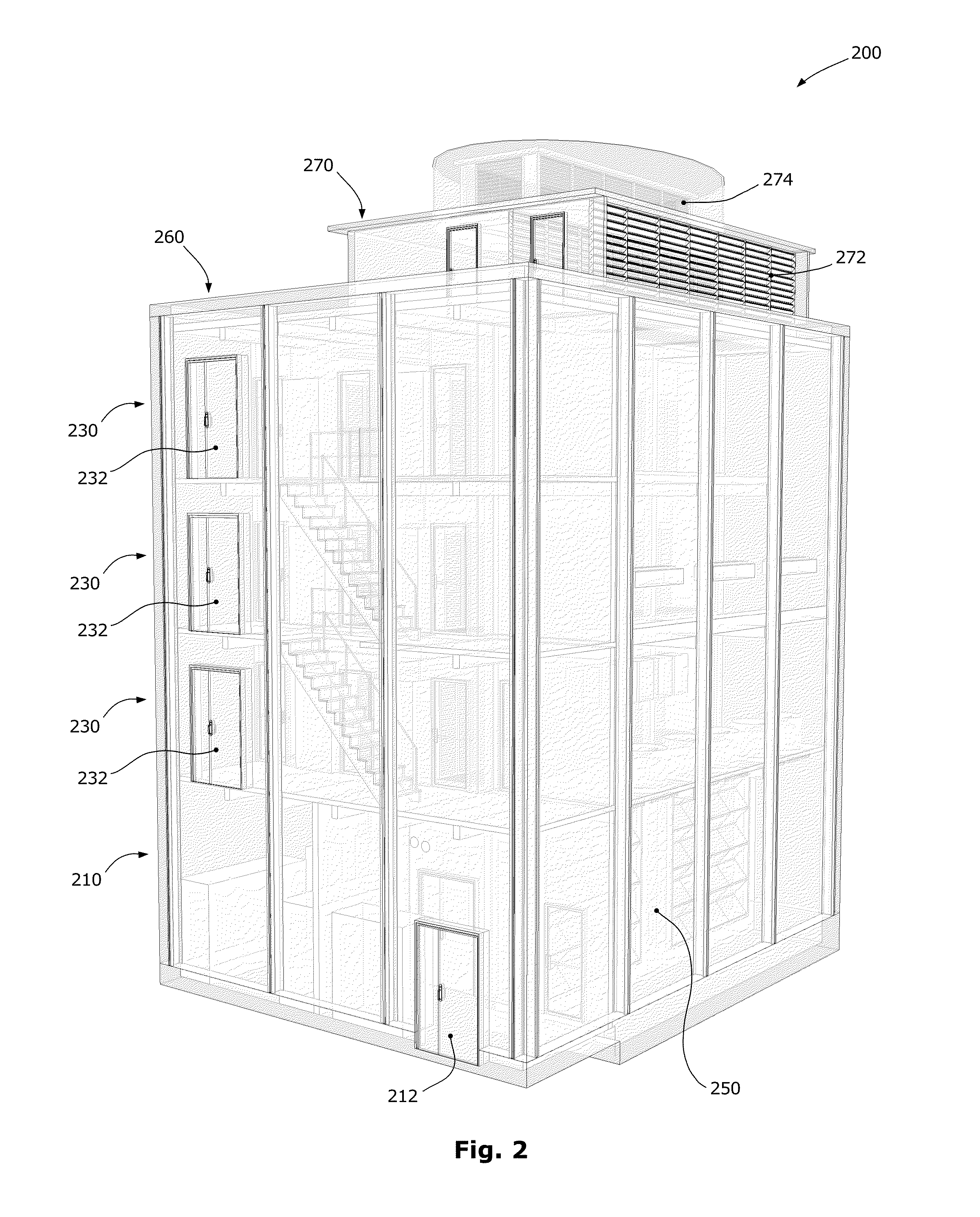Prefabricated vertical data center modules and method of large-scale deployment
a data center module and prefabricated technology, applied in the field of data centers, can solve the problems of increasing the power density of computer packaging, the greatest limiting factor of scalability and flexibility in data centers, and the inability to achieve the limited form of scalability and flexibility
- Summary
- Abstract
- Description
- Claims
- Application Information
AI Technical Summary
Benefits of technology
Problems solved by technology
Method used
Image
Examples
Embodiment Construction
[0034]Novel prefabricated data center modules and a method of their large-scale deployment will be described hereinafter. Although the invention is described in terms of specific illustrative embodiments, it is to be understood that the embodiments described herein are by way of example only and that the scope of the invention is not intended to be limited thereby.
[0035]Referring to FIG. 1a, a module-based data center complex is shown at 10 to be composed of a main facility building 100 surrounded by clusters 205 of prefabricated data center modules or units 200. In this case, 2 clusters 205 of 32 modules 200 each. The central facility 100 hosts the services that are shared by the modules 200: low or medium voltage power feeds, chilled-water feeds, demineralized water for humidity control, Internet connections, security check points with biometric access controls, washrooms, meeting rooms, etc.
[0036]The data center modules 200 are linked to the central facility 100 by a grid of corr...
PUM
 Login to View More
Login to View More Abstract
Description
Claims
Application Information
 Login to View More
Login to View More - R&D
- Intellectual Property
- Life Sciences
- Materials
- Tech Scout
- Unparalleled Data Quality
- Higher Quality Content
- 60% Fewer Hallucinations
Browse by: Latest US Patents, China's latest patents, Technical Efficacy Thesaurus, Application Domain, Technology Topic, Popular Technical Reports.
© 2025 PatSnap. All rights reserved.Legal|Privacy policy|Modern Slavery Act Transparency Statement|Sitemap|About US| Contact US: help@patsnap.com



